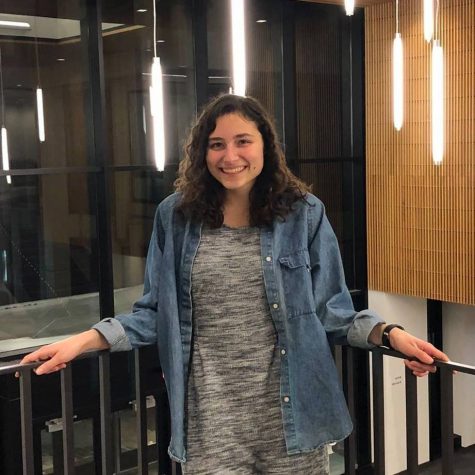Plyo brings exercise incentives to Mac
November 14, 2019
At the beginning of this semester, a few students figured out a new way to get some free food around campus by just downloading an app called Plyo and walking into the Leonard Center. The app gives users deals at local restaurants when they spend time in campus fitness centers.
Peter Schultze, a co-founder of Plyo and University of Minnesota ’19 graduate, came up with the idea for the app while still in college.
“I was inspired to help college students prioritize health and fitness despite having busy schedules, so the goal was to make fitness fun by rewarding users with discounts towards their favorite brands and spots on campus for going to the gym,” Schultze wrote in an email to The Mac Weekly.
The app offers discounts to several restaurants within walking or busing distance of Macalester — free desserts at the Cheese Shop, discount burgers and shakes at MyBurger and buy-one-get-one meals at Rahm’n, to name a few. The app has fitness deals, too, with discounts for the Garmin website and nearby Snap Fitness gyms.
The app works by tracking a user’s location and automatically starting a timer when the user enters a fitness center, like the Leonard Center. For every hour spent in the building, users earn 50 points — the smallest deals for things like free drinks and toppings start at 100 points.
For many Macalester students, the app has been an easy way to get discounts around campus. Emma Higgins ’20, who found out about the app through friends earlier this semester, referred to it as “literally just free money.”
“I feel like it’s the best incentive, because you’re just walking into the LC and you get points for that,” Higgins said.
Technically, since the app tracks a user’s location, users can earn points just by being in the LC even if they’re not exercising. Higgins said she doubts this happens much, though.
“I think we all sort of joke about the idea of going in and just leaving your phone, but I don’t actually know anyone who does that. I think most people [who use it] are in the LC anyway for whatever reason,” she said.
This makes it especially useful for athletes. Higgins, who is on the Women’s Cross Country team, noted that she’s in the LC for about three hours a day for practice anyway, so she racks up points quickly.
Schultze has been excited about the growing popularity of the app. Since its launch at the University of Minnesota in the fall of 2018, it has since spread to 11 colleges — six in the Big Ten conference and five in the Minnesota Intercollegiate Athletic Conference (MIAC). The 30,000 app users have collectively logged over a million hours spent in athletic centers.
“It’s very motivating to receive feedback from our users about the impact we’ve had,” Schultze wrote.
According to Schultze, businesses have been enthusiastic about partnering with the app, as well.
“While we’re rewarding students for living an active lifestyle, we’re also creating a great advertising channel for partners to connect with new customers,” Schultze wrote.
The Naughty Greek, which joined Plyo soon after it launched, has seen over 800 new student customers at its Snelling Avenue location since January, according to location manager Natalie Singer.
“We were impressed by the way Plyo kept its users engaged,” Singer wrote in an email to The Mac Weekly. “We love to meet students in the area, and we thought that Plyo’s fitness angle would be a good match with our scratch-made, whole-ingredient offerings.”
Although the app has gained popularity, some students have found it concerning that it always tracks their locations. Free food, though, remains a powerful incentive.
“I remember initially when people were talking about the app, they were saying that was something that gave them pause, and I remember [a friend] and me just saying, ‘oh, I don’t care, everyone knows everything anyway,’” Higgins said.
The app’s terms of service and its website reiterate that it stores no location data.
In the future, Schultze hopes to expand the app to more campuses, users and business partners.
“I like the idea of it.,” Higgins said. “It’s a good incentive for people to work out, but also a good incentive for people to support local business.”













